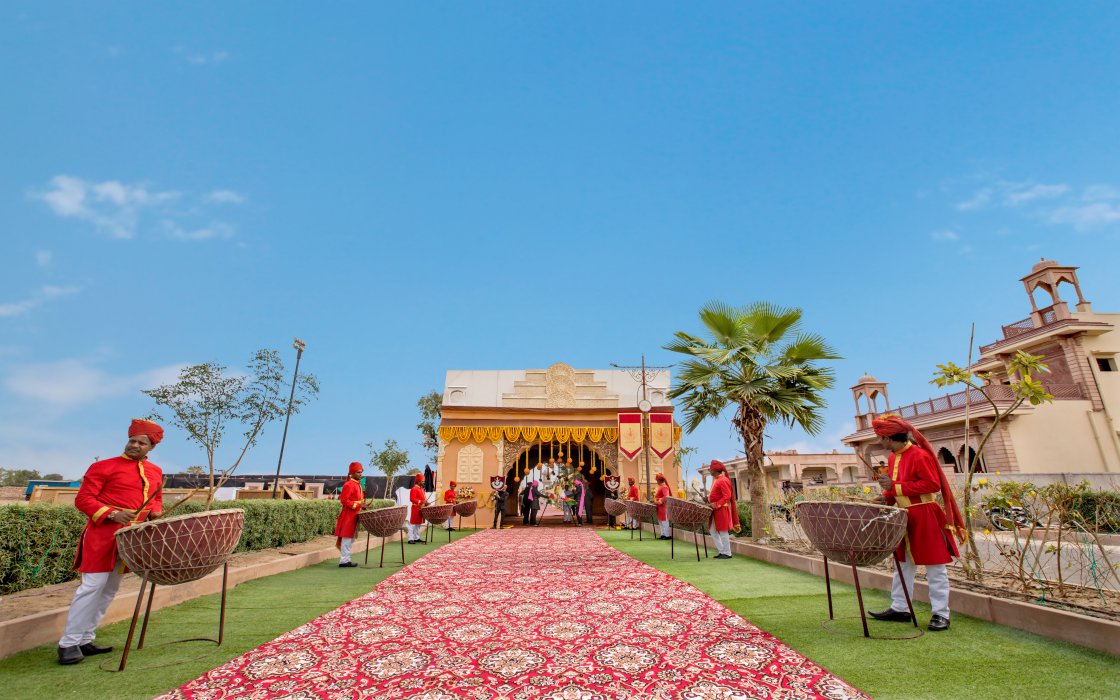Indian real estate was expected to recover in 2021 after it weathered the black swan of the Covid-19 pandemic the previous year. Developers put on a brave face throughout the year, and industry data of the top-ranked developers helped keep hopes alive. Closer inspection of the sector, however, raises several questions.
Although there were challenges, 2021 was a far cry from the year before, when a Covid-induced lockdown stalled all real estate transactions. The real estate industry’s future was clouded by labor migration and buyer reluctance to inspect projects.
In any case, the year 2021 should be seen as a ray of hope for the sector. During the year, cash-rich purchasers returned to the market. As a result of lower borrowing costs and ready-to-move-in inventory available in the market, transactions improved. By and large, the year was disappointing for developers who had a high inventory level but low brand recognition.

As far as the macroeconomic outlook and market fundamentals are concerned, the year 2022 is not likely to differ greatly from 2021. The year 2022 could be even more challenging than 2021 for many reasons. A price-sensitive market has been affected by rising input costs, causing the business to seem infeasible. Due to thin profit margins, many developers are faced with a tough situation where input costs are escalating, but demand is not ready to absorb the cost increases.
The apprehensive buyer of today is also unable to pay both rent and EMI, which means that new launches will be few and far between. The majority of developers would prefer offloading inventory and/or completing the project.
2021’s Top Real Estate Moments
Include plenty of optimism. The year 2021 has been full of challenges for the industry, but the year has also brought unique opportunities, says Vinit Dungarwal, director at AMS Project Consultants.
- Developers embraced the digital medium during this time and reworked traditional models.
- Furthermore, the industry was also able to gauge the risks associated with fluctuations in the market during the testing times.
- Technology and data have taken centre stage, which has led to an increase in demand for new data centres.
- Several senior living concepts were well received in 2021, and they will grow in 2022, he says.
- The historically low-interest rates and the RBI’s assurance to maintain the status quo, according to Aditya Kushwaha, CEO of Axis Ecorp, have helped revive demand in the residential sector.
- Customers increasingly prefer holiday homes with a lot of amenities, luxurious houses with sophisticated amenities, and gated townships with well-managed infrastructure.
- The government has greatly supported Pecan Reams by offering multiple incentives, says Rohit Garodia, managing partner at Pecan Reams.
- According to Goradia, the reductions in stamp duty, lowest home loan interest rates, and developer discounts have all contributed to the massive gains in the real estate market in recent years and this trend will only continue in 2022.
- NAREDCO’s vice-chairman and MD, Niranjan Hiranandani, points out that accelerated vaccination drives, lower home loan interest rates, a buoyant capital market, liquidity infusions, and the highest FDI were among the most notable milestones of 2021.
Perspectives For Developers In 2022
“The year 2022 will see several new residential and commercial projects launched”.
Increasing confidence among both buyers and investors will boost home-ownership values and fast-track home upgrades. As we enter a new year, we can expect new developments in design, planning, and amenities. Young homebuyers are likely to seek modern homes that include open designs, flexi-spaces, automation, and sustainability, along with the ability to walk to work.

Consequently, commercial real estate will experience a dispersed demand, and the hub-and-spoke model will dominate in the aforementioned twin cities and suburbs,” concludes Hiranandani. A significant shift has taken place in the psychology of buyers in this new normal. Due diligence is being carried out extremely thoroughly by homebuyers, who want to cover all bases before purchasing a property or committing to a project. “Prospective buyers consider the ROI in addition to features, location, and interiors before making a purchase,” says Dungarwal.
The real estate sector has shown a lot of resilience in 2021, but increased costs of raw materials are a cause for concern. Moreover, the trends suggest that raw material prices may not stabilize or decline shortly. For now, the players have been absorbing the escalating costs, but if the prices continue to rise, developers may be forced to pass the burden to homeowners,” says Kushwaha.
Goradia predicts that 2022 will keep evolving as a buyer’s market. “While there will be a rise in input costs with the commodities cycle and steel prices at an all-time high, we do not see this as a major problem as far as overall demand,” he says.
In 2021, the focus will be on new-age concepts like going ‘physical’, meaning that spaces will define the user experience in the physical world utilizing technology as an enabler. The statement is attributed to Vipul Shah, managing director of Parinee Group. With artificial intelligence, virtual reality, and augmented reality, developers have been experimenting with strategies to cater to a smart, frictionless workforce.
According to Shah, hybrid office spaces will provide a new-age workplace experience starting in 2022. In 2022, the real estate market will be guided by improved economic conditions in the job market, regular economic activity, and pent-up demand. The demand for ready-to-move spaces, which currently comprise a limited number of units, will shift shortly to under-construction projects,” he claims.
A few big brands have achieved a sizable market share in the year 2021. However, this hasn’t been a uniform recovery for all developers. The real challenge for developers in 2022 will be passing on the rising input costs to consumers.
How To Buy Property in Jodhpur:
Jodhpur has an advantage over other major cities in that its land and property prices are low compared to other cities. According to a survey, the average property price in Jodhpur is 51.75 lakhs INR, which is much lower than Delhi’s (73.46 lakhs INR) and Gurgaon’s (90-95 lakhs INR).

A recent announcement from the Rajasthan government has reduced the district lease committee (DLC) rates, allowing real-estate investors in Rajasthan to see lower tax burdens compared to other states. Additionally, the GST rates for under-construction housing properties have been revised down from 12% to 5%.
The property in Jodhpur, however, have seen a vast increase in the last few years. Take, for instance, the New Pali Road villas that were sold at 23 lakhs in 2009, and today they are sold on the resale market for 75-80 lakhs with a vast increase in the property price.

